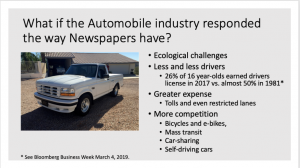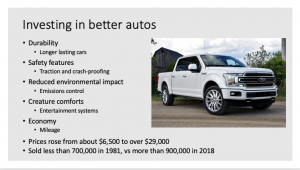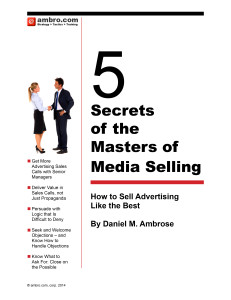Many have written about the “Original Sin” of traditional media making the mistake of giving away their content online, sealing their fate.
Too few understand that it was the entire Internet competing for time that drew audiences away from online newspapers. While internet media re-invested their profits in making themselves better, newspapers took out profits to pay interest and principal on debt taken out to purchase them by leveraged buyers, especially chains. Those chains correctly assumed that they could take out content, making the paper worse, and people would keep paying for them…so they borrowed money to buy many papers. These chains are still riding the papers into the ground.
A proper “freemium” strategy would have worked a decade ago, and is working now. Keep in mind that not all print readers pay for their copy. Give away some readership, to help the audience understand why they want more articles, more often. A metered-paywall does that. The key is to make the content really superb, and have more of it, not less.
Consider that the automobile business has two of the same problems that newspapers have, namely young people don’t think cars or trucks are important, and they believe them to be bad for the environment; just as young people don’t think print is important and not “green.”
Since 1981 the percentage of teenagers who have their driver’s license by age 16 has dropped by half. While interest has dropped, Detroit invested to make cars better and better; more efficient, safer, environmentally cleaner, and full of creature comforts and most recently entertainment. During that time, newspapers have only reduced the news gathering they do, taken content out, and reduced page-size to save costs.

 The right strategy for local news is to switch from a mass-reach strategy to a high-quality-for-customers who care strategy. And re-invest in the content of the media to drive value and price up. Smaller readership will be the right readers, rather than the most readers.
The right strategy for local news is to switch from a mass-reach strategy to a high-quality-for-customers who care strategy. And re-invest in the content of the media to drive value and price up. Smaller readership will be the right readers, rather than the most readers.
Advertisers can be convinced they don’t need to reach the people who can’t afford their products or services. That is what TV is for; to reach un-employed people on their couches. Print is for reaching the leaders and leading consumers of the community.
Newspapers must build their strategy on making better products that are a luxury, not a necessity. The paper, and the web-site, most have more, not less, local content. One piece of content every day or every week needs to be spectacular. “Good enough” is no longer. Covering the news conference may be necessary, but it’s not sufficient for success.
The top 10 to 20% of the market is who buys 80% of the advertised products and services. They are also the ones who’ll pay to know the important information in their community.
Local newspapers don’t need to die. They are trusted and needed in their markets. But they do need to change many things. Re-think time of day for publishing, geographic footprint, content-authorship, pricing, content about what is soon-to-happen, not what happened.
What if newspapers went “afternoon,” and were delivered by the postal service at a time when they could be consumed leisurely after work, perhaps ordered and delivered with that dinner via Grubhub? This would eliminate the costly home-delivery infrastructure that is becoming uneconomic. Savings could be put into content that is really good; the insider scoop on what is about to happen; at the city council, at an important business, or the high school basketball game. Results are a commodity. Understanding the future is valuable.
Netflix has shown us that people know the difference between genuinely good content and the generic (or worse) content that fills your 100 “free” channels with nothing to watch. Netflix has shown us that people will pay for the good stuff, especially if they want to be able to talk about it with their friends. Netflix didn’t start out that way; they built it one step at a time, and one piece of superb content at a time. They did it despite plenty of competition, and lots of free alternatives.
Newspapers can do it, too. Start with one superb piece every week that your market talks about.

